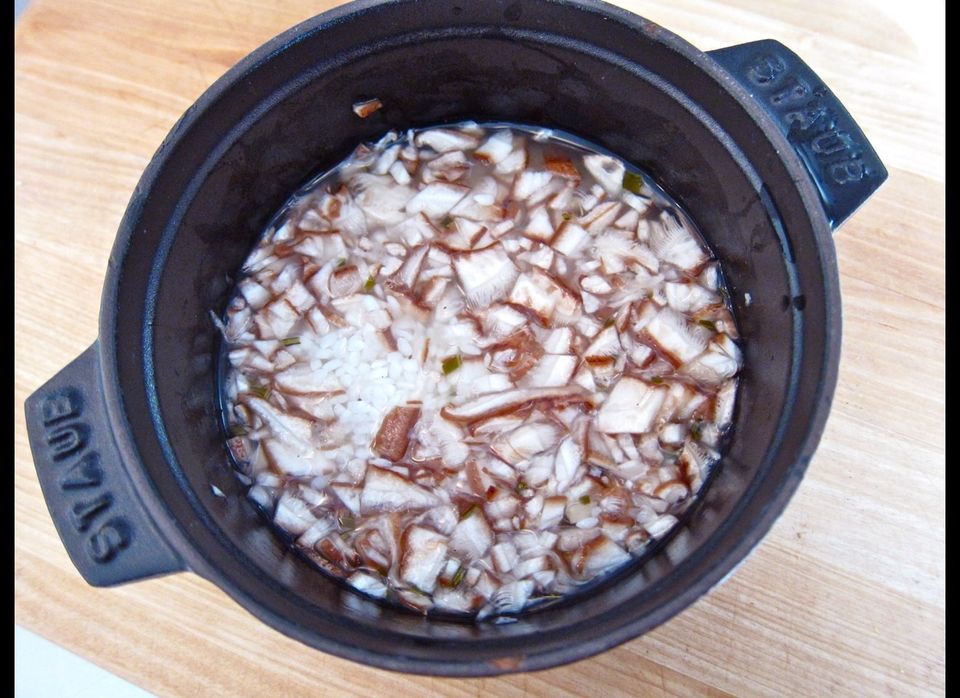The other day, new friends were coming over for a drink before they went out for a sushi dinner. My usual snacks of salami, olives, cheese straws and so forth might have started their evening on strong flavors that would blunt their appreciation for the delicate meal ahead of them, so I thought I'd use the subtle savoriness of dashi -- seaweed broth -- and mushrooms to make a Japanese-ish version of the fried Italian rice balls known as arancini.
Well, it didn't work, at least not the way I did it. I used Japanese rice, which clumps together nicely either for sushi or to accompany a meal and which I figured would clump into rice balls too. The standard way of cooking such rice is to rinse it very thoroughly in several changes of water, then to rub it between your hands, still under water, to remove much of the surface starch. But I wanted the "arancini" to hold together, so I just rinsed it quickly then drained it and left it in the strainer to dry. I then cooked it in dashi along with a couple of minced shiitake mushroom caps and a little of the kombu seaweed with which I'd made the broth.
It tasted just right -- ricey and mildly savory- - and had a good just-sticky-enough consistency. I pressed it into a little pan and refrigerated it overnight.
A few hours before our friends arrived, I took it out of the fridge and went to form little balls for frying. But they didn't hold together. The grains were hard and entirely separate. I added an egg yolk. The balls still fell apart. I warmed it slightly, knowing that this might soften the rice and hoping that it would also reactivate the sticky starches, but no dice.
So I got out the salami and olives -- which, as it happens, was fine, because one of our friends was stuck in Toronto airport because of foul weather and the other therefore cancelled their seats at the sushi bar, so our standard drinks snacks were no longer out of place.
And the next night, Jackie and I had fried rice for dinner -- which was particularly good because the rice had been cooked in umami-rich dashi.
So what did I learn? I learned that I don't know enough about the gelatinization and crystallization of rice starches. I'd assumed that Japanese rice behaved like medium-grain risotto rice and would remain sticky when cool -- not so. One rainy day (not today, though it certainly is rainy here in New York), I shall try to understand this, at least sufficiently well to be able to predict outcomes better.
In the meantime, I will use Italian rice next time I want to make these Japanese arancini, but will cook it using dashi (which I've done before for a delicate and delicious Japanese-flavored risotto). I will also use dashi next time I'm planning a skilletful of fried rice.
And I'll make sure there's always salami in the house.
